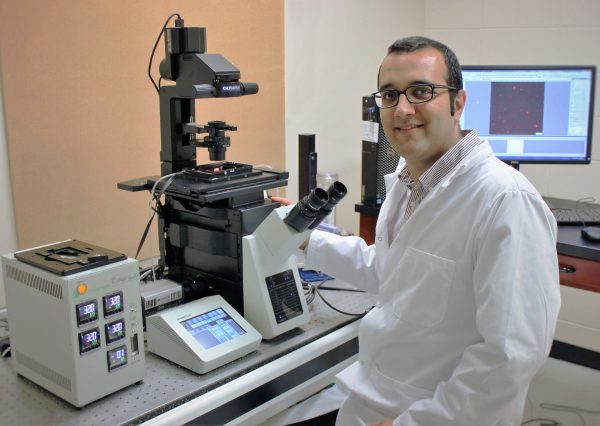October 24, 2016 — Reza Nosrati (MechE PhD 1T6) was recently honoured with the 2016 Douglas R. Colton Medal for Research Excellence, in recognition for his pioneering work in microfluidics and nanotechnologies to more effectively treat male infertility.
Only one Colton Medal is awarded nationally each year, recognizing excellence in research leading to new understanding, novel developments and applications in microsystems and nanotechnology in Canada.
As a PhD student under the supervision of Professor David Sinton (MIE) — who was the 2006 recipient of the medal — Nosrati laid new groundwork for infertility treatment, developing microfluidic systems for male infertility diagnosis and treatment. In particular, his research focused on sperm motion near surfaces, semen analysis, and selection of sperm with high DNA integrity.
His research led to last year’s discovery of sperm that exhibit a more efficient two-dimensional slithering, “snake-like” motion near surfaces, instead of what is typically observed as a three-dimensional, corkscrew motion.
“The slither motion suggests a navigation strategy to better adapt to the highly confined and viscous lumen within the human fallopian tube,” Nosrati explained. In other words, human sperm can adapt their swimming style to their environment. “This observation provides a novel opportunity to sort the sperm for assisted reproduction.”
Nosrati also invented three micro-technologies for sperm selection and semen analysis, which are currently under the process of commercialization, in collaboration with the University of Toronto and MaRS Innovation.
“The device significantly outperforms the best current clinical practices by selecting sperm with over 80 per cent improvement in sperm DNA integrity,” said Nosrati. He has also developed technologies to quantify a male’s fertility potential and to test for sperm DNA integrity.
Nosrati is now an NSERC post-doctoral fellow in the department of Chemical Engineering at Queen’s University, applying his microfluidics and nanotechnology work to cell biology and sensing, while also continuing his research on infertility issues.
“The ultimate goal with my research is to alleviate major emotional and financial burdens for families dealing with infertility in Canada and worldwide by providing affordable and accessible treatment for infertility,” he said.
